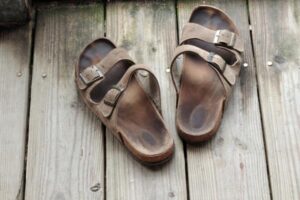How to Wash Clothes by Boiling Them with Soda: A Complete Guide to Stain Removal & Fabric Care
Boiling clothes with soda (like washing soda or baking soda) is an age-old, powerful method to tackle stubborn stains, disinfect fabrics, and revive dingy whites. Whether you’re dealing with grease-stained workwear, mildew-smelling towels, or vintage linens, this technique offers a chemical-free solution when modern detergents fall short. Below, we’ll walk you through the process step-by-step, share tips for combining soda with vinegar or laundry detergent, and explain how to adapt this method for washing machines.
Topics Covered in This Article
Why Boil Clothes with Soda?
- Deep Stain Removal: Breaks down grease, oil, and organic stains (e.g., blood, grass).
- Disinfection: Kills bacteria, mold, and dust mites without bleach.
- Deodorizing: Neutralizes stubborn odors from smoke, sweat, or mildew.
- Eco-Friendly: Reduces reliance on harsh chemicals; washing soda is biodegradable.
Step-by-Step Guide to Boiling Clothes with Soda
What You’ll Need
- A large stainless-steel pot (avoid aluminum, as soda can react with it)
- Washing soda (sodium carbonate) or baking soda (sodium bicarbonate)
- Metal tongs or a long-handled spoon
- Heat-resistant gloves
- Optional: White vinegar (for rinsing) or laundry detergent
Step 1: Prepare the Boiling Solution
- Fill the pot ¾ full with water and place it on medium heat.
- Add 3 tablespoons of washing soda per liter of water. For tougher stains, mix in 1–2 tablespoons of baking soda for extra cleaning power.
- Tip: Washing soda is more alkaline than baking soda, making it better for grease and heavy stains.
Step 2: Boil the Clothes
- Heat the solution until it reaches a rolling boil.
- Submerge the stained garment completely using tongs. Avoid overcrowding—clothes need space to move.
- Boil for 30–45 minutes, stirring occasionally to ensure even cleaning.
- Caution: Delicate fabrics (silk, wool, spandex) may shrink or warp—stick to cotton, linen, or polyester blends.
Step 3: Cool and Rinse
- Turn off the heat and let the water cool to room temperature.
- Remove the garment and rinse thoroughly under cold water.
- For residue-free results, soak in a vinegar-water solution (1 cup vinegar per 4 liters of water) for 10 minutes to neutralize alkalinity.
Step 4: Wash as Usual
- Launder the garment with regular laundry detergent in a washing machine or by hand.
- Air-dry and inspect for remaining stains. Repeat boiling if needed.
Pro Tips & Safety Notes
- Combine with Vinegar: Add ½ cup white vinegar during rinsing to soften fabrics and dissolve soap scum.
- Soak Overnight: For mild stains, skip boiling and soak clothes in baking soda overnight (1 cup soda + 4 liters water).
- Machine Adaptation: Add ½ cup washing soda directly to the drum for a deep-clean cycle.
- Avoid Mixing with Bleach: Soda and chlorine bleach can create toxic fumes.
FAQs: Answering Your Top Questions
1. Can You Mix Baking Soda and Laundry Detergent?
Yes! Add ½ cup baking soda to your detergent to boost cleaning power and soften hard water.
2. Where to Put Baking Soda in a Washing Machine?
- Top-Loaders: Add it directly to the drum with clothes.
- Front-Loaders: Place in the detergent drawer or a mesh bag.
3. How to Wash White Clothes with Washing Soda?
Boil whites with washing soda and 1 tbsp blueing agent to counteract yellowing.
4. Is Boiling Safe for All Fabrics?
No—avoid elastic, silk, or dyed fabrics. Test a small area first.
When to Use Boiling vs. Other Methods
- Boiling: Grease, oil, mildew, or heavy stains.
- Soaking: Light stains or odor removal (soaking clothes in baking soda overnight).
- Washing Machine: Add ½ cup washing soda to the rinse cycle for hard water buildup.
Conclusion: Embrace Old-School Laundry Wisdom
Boiling clothes with soda is a timeless, effective way to rescue heavily soiled items and reduce chemical use. Pair it with vinegar for rinsing or laundry detergent for added freshness, and you’ll unlock a powerhouse cleaning routine. Just remember: Safety first—always use gloves and avoid delicate fabrics!
For more guides on eco-friendly cleaning or stain removal hacks, explore our Home Cleaning category.







